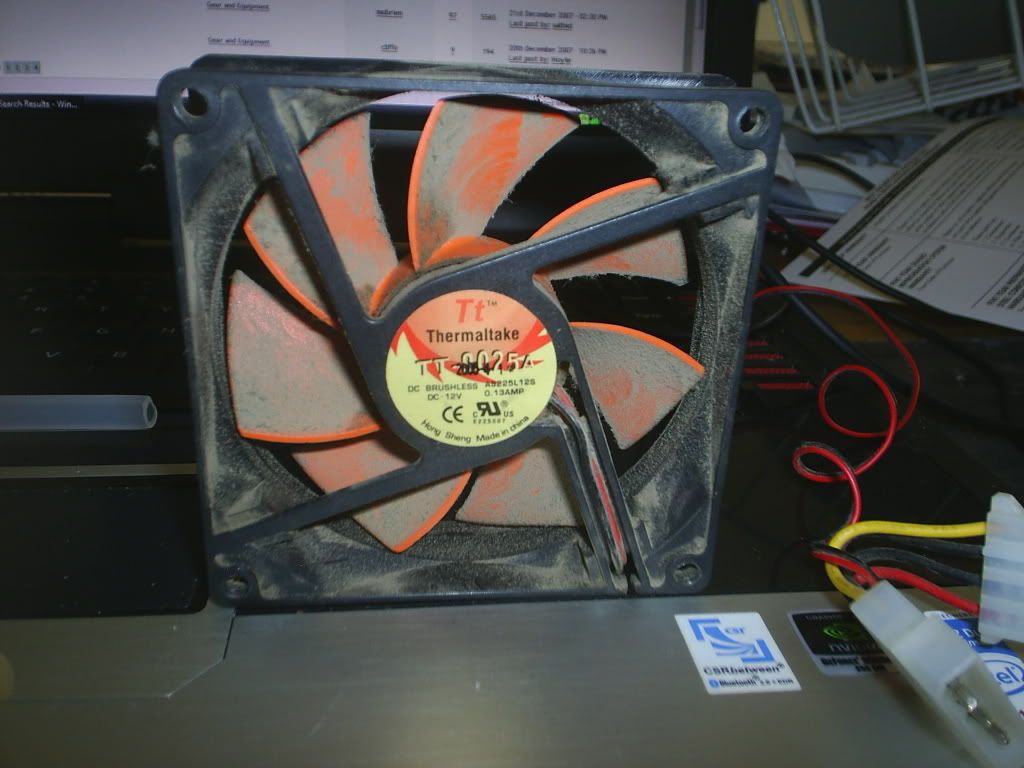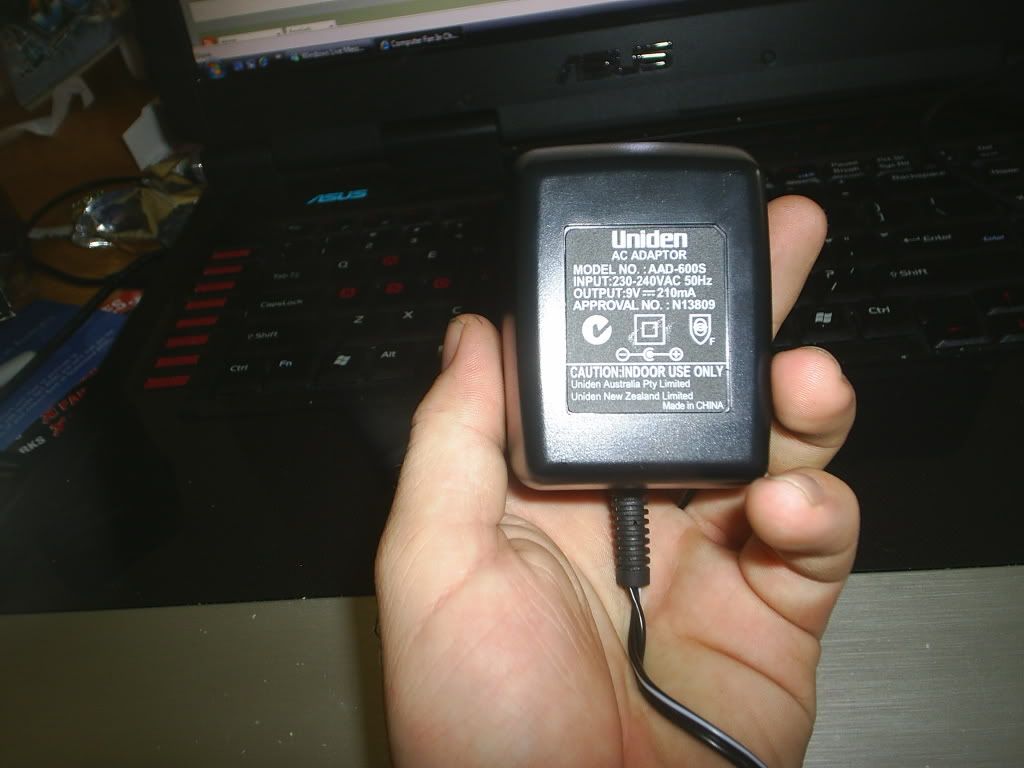You are using an out of date browser. It may not display this or other websites correctly.
You should upgrade or use an alternative browser.
You should upgrade or use an alternative browser.
Where To Put The Fan In A Kegerator?
- Thread starter alexbrand
- Start date

Help Support Australia & New Zealand Homebrewing Forum:
This site may earn a commission from merchant affiliate
links, including eBay, Amazon, and others.
Thunderlips
Well-Known Member
- Joined
- 2/10/04
- Messages
- 819
- Reaction score
- 1
Do you really need to put a fan in a fridge?If I want to put a fan in my fridge.
I thought their main use was for chest freezers.
And that word, kegerator, it's just so...American. <_<
FNQ Bunyip
Non Pro Member
- Joined
- 20/9/04
- Messages
- 1,447
- Reaction score
- 26
Thunder, go the fan , I've put them in everything too do with brew, without the fan if you put a warm keg in the fridge it can take 2 to 3 days too pull down too temp and in the process warms up the others , with the fan a warm keg is pulled down in under a day .... I run 3 , Brew box,larger fridge and serving fridge, I also think (IMHO) that it probly saves power by moving the warm air around and getting it all cool quiker , the fridge soon settles down and cycles less...
Cheers
Cheers
Thunderlips
Well-Known Member
- Joined
- 2/10/04
- Messages
- 819
- Reaction score
- 1
Sounds like a good idea then. I must look into it.I also think (IMHO) that it probly saves power by moving the warm air around and getting it all cool quiker , the fridge soon settles down and cycles less...
Thanks.
Zwickel
Keg Drainer
- Joined
- 7/10/05
- Messages
- 1,260
- Reaction score
- 13
another point of view:
between bottom and top of the fridge, there might be easily a difference of 2 to 3 degree.
If you draw a beer, youll get it from bottom, that means youll get cold beer from bottom into the line. After you have drawn a beer, its going to warm up in the beerline on top of the fridge.
But then the beer releases gas into the tube. So your next pour will be froth at first.
thats avoidable by using a fan.
Cheers :icon_cheers:
between bottom and top of the fridge, there might be easily a difference of 2 to 3 degree.
If you draw a beer, youll get it from bottom, that means youll get cold beer from bottom into the line. After you have drawn a beer, its going to warm up in the beerline on top of the fridge.
But then the beer releases gas into the tube. So your next pour will be froth at first.
thats avoidable by using a fan.
Cheers :icon_cheers:
sanders4_
Well-Known Member
- Joined
- 16/9/06
- Messages
- 66
- Reaction score
- 0
I just remembered, the last time i was in Jaycar, i saw fans that looked EXACTLY the same as standard computer fans, but they were rated at 240v, meaning a 12V power source isn't needed. Only problem is they are 10 times the price of 12V fans, costing $30 instead of $3... BUT if money is no object, and your competent handling 240V safely, it could be a more straight-forward way to go.
LethalCorpse
Well-Known Member
- Joined
- 19/2/07
- Messages
- 824
- Reaction score
- 8
Yep, that phone charger will work fine. Just connect the wires such that the fan spins the right way, and Bob's yer uncle.
To clarify: It's not a trial and error thing, most fans will blow if wired backwards, not run in reverse. On the fan, the red wire is positive, black wire negative, that's pretty much invariant. On the PSU, look for a symbol like the one under the C-Tick, the concentric boxes and the shield-looking thing. That symbol tells you that the output is centre positive, ie the middle of the plug is positive, the outside is negative. See how the symbol has a small + connected to the middle of a pair of circles, and a - to the outside? This can be the other way around, but the symbol should always be there to tell you which way it's wired. You can cut the end off and test with a multimeter to work out which wire is connected to the centre of the tip, or get a socket which matches the tip (Jaycar/DSE) and wire the fan into it the same way.
LethalCorpse
Well-Known Member
- Joined
- 19/2/07
- Messages
- 824
- Reaction score
- 8
nah, they're a brushless DC motor. One direction only.
ausdb
Copper kettles don't kill people....
- Joined
- 21/8/04
- Messages
- 1,517
- Reaction score
- 0
Some may be but not all, as otherwise you could not speed control them to make tight arse stirplates. All the BLDC motors that I know of have a fixed supply and use a separate input for the speed signal. An old skool DC fan motor will run in either direction and vary its speed according to the voltage that is applied.nah, they're a brushless DC motor. One direction only.
FWIW has anyone tried putting a fan at the bottom with a bit of 90mm stormwater pipe on top as a duct to direct the air upwards and get some nice convection currents going?
LethalCorpse
Well-Known Member
- Joined
- 19/2/07
- Messages
- 824
- Reaction score
- 8
Computer fans are basically exclusively BLDC driven, with the commutation pulses being setup by an onboard circuit. The voltage and/or duty cycle (if being driven by PWM) determines the winding current, which determines the torque, which determines the RPM, which allows you to undervolt them for stir-plate use. The controller just senses the position so that it knows which coils to fire and when. They're used in computer fans for a bunch of reasons, including their much lower EMI than brushed fans, longer lifespan, and lower noise.
Similar threads
- Replies
- 13
- Views
- 4K
- Replies
- 1
- Views
- 5K





